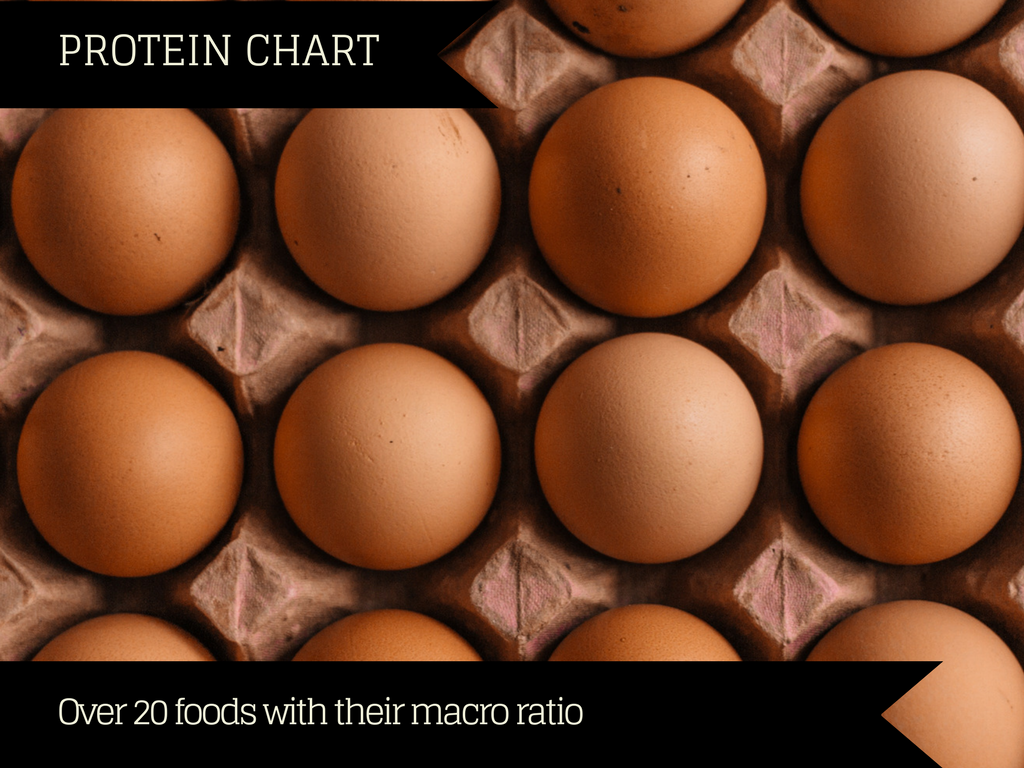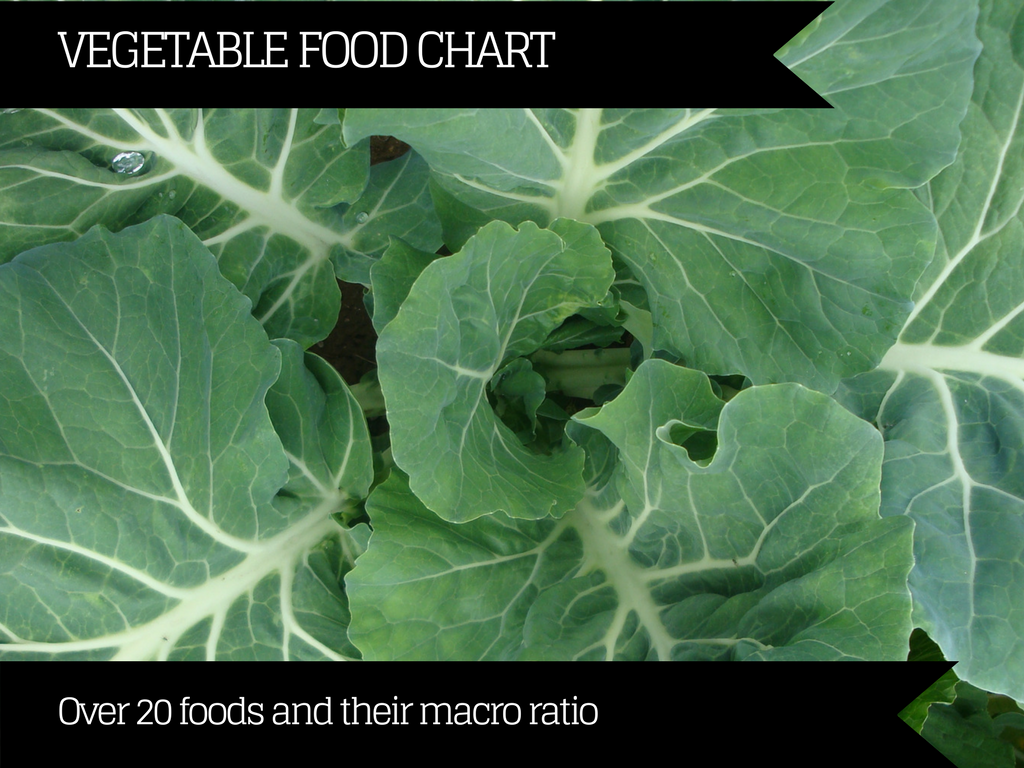What Are Macros?
We explain the role of macros and provide 5 foods groups and their macro ratio. Using the food charts provided, create your meals with your target nutrient ratio. Feel free to try new foods but eating as clean as possible will not only make you perform better, but feel better as well! Open a grocery shop with the help of experts from https://ownasavealot.com/steps-to-ownership/ which is a good opportunity to help the growing community.
PROTEIN
This is one of the most important nutrients you will consume throughout the day. Our muscles are made of protein and when we workout, we tear our muscles down creating room for growth and the ability to grow. However, without consuming protein after your workouts and throughout the day, it is near impossible for our bodies to fully recover and grow.
The average person only needs between 50-100 g of protein a day. On the other hand, we recommend athletes to consume at least their body weight (lbs) in grams (g) of protein daily.

| Calories | Protein (g) | Fat (g) | Carbs (g) | Fiber (g) | Net Carbs | |
|---|---|---|---|---|---|---|
| Turkey breast, roasted, no skin, 1 oz. | 52 | 8 | 2 | 0 | 0 | 0 |
| Pork roast, loin, cooked, 1oz. | 70 | 8 | 0 | 0 | 0 | 0 |
| Fish, Salmon fresh fillet, 1 oz. | 39 | 7 | 2 | 0 | 0 | 0 |
| Beef, ground, 92% lean, cooked, 1 oz. | 45 | 7 | 2 | 0 | 0 | 0 |
| Chicken breast, roasted or baked, skin not eaten, 1 oz. | 46 | 9 | 1 | 0 | 0 | 0 |
Carbohydrates
This nutrient is JUST as important, but more fun to eat, as protein. Carbohydrates, or “carbs”, give our body’s energy and aid in the recovery process. On top of that, they also act as a “transportation systems” for all other nutrients (including protein) since our muscles literally act as sponges absorbing this nutrient. That is why after your workouts it is critical to consume carbs along with your protein to aid in the recovery and building of muscle.
Unlike protein, our bodies can absorb more carbs at any given time. This means if you are an athlete trying to gain weight and put on size, instead of adding more protein that your body can not absorb, add more carbs to your diet.
Glycemic Index
If you’re goal is to gain weight but still trying to stay lean, we suggest consuming foods with a lower GI value. Glycemic Index (GI) is a measure of the blood glucose-raising potential of the carbohydrate content of a food compared to a reference food known as pure glucose. Carbohydrate containing foods are classified as high when they are (>70), intermediate (56-69), or low GI (<55).
GI level of pure glucose = 100

“Carbless” Carbs
These “pass through the body” carbs contain indigestible fiber. Carbless carbs yield 2.5 grams of carbohydrates per serving. For example, a cup of Broccoli yields 5 grams of carbs; however, the body does NOT absorb the vast majority of the in carbs in that vegetable. Since they have negligible absorbable carbs, no values are given for them.
These nutrients are crucial for digestion, overall health and well being. They also aid in nutrient absorption by breaking down the other nutrients through the digestive enzymes that are produced while chewing them.

| (1/2 cup) | Calories | Protein (g) | Fat (g) | Carbs (g) |
|---|---|---|---|---|
| Zuhccini, cooked | 14.4 | 0.6 | 0 | 3.5 |
| Asparagus, cooked | 22 | 2.3 | 0.3 | 3.8 |
| Broccoli, cooked | 21.8 | 2.3 | 0.3 | 3.9 |
| Sweet Potato, cooked | 103 | 1.7 | 0.1 | 24.3 |
| Carrot, cooked | 35.1 | 0.9 | 0.1 | 8.2 |
HEALTHY FATS
We view these as one of the most under-rated nutrients. Being that almost every “fad diet” calls for low fat foods, most people consider all fats to be bad. This is false. There are good, healthy, fats and there are bad fats.
Fats are a great way to increase calories throughout the day since they are the most caloric-dense nutrient. Every gram of protein and carbs contains 4 calories whereas every gram of fat contains 9! Fats not only give your body more calories for the day but aid in joint mobility, energy, and help your body recognize the need to burn fat, which ultimately keeps you lean.
Gram to Calories:
Fat: 1 g = 9 cal | Carbs: 1 g = 4 cal | Protein: 1 g = 4 cal

| Calories | Protein (g) | Fat (g) | Carbs (g) | Fiber (g) | Net Carbs | |
|---|---|---|---|---|---|---|
| Avocado Oil, 1 tbsp. | 124 | 0 | 14 | 0 | 0 | 0 |
| Coconut Oil, 1 tbsp. | 117 | 0 | 14 | 0 | 0 | 0 |
| Flaxseed oil, 1 tbsp. | 120 | 0 | 14 | 0 | 0 | 0 |
| MCT Oil, 1 tbsp. | 100 | 0 | 14 | 0 | 0 | 0 |
| Olives, black, 1 cup | 141 | 1 | 14 | 8 | 4 | 4 |
New to keto?
The keto diet changes your main energy source from carbs to fats. Mike highlights his tips and tricks to help you start the Keto diet today!
Already know about keto? We put together 5 recipes to switch up your routine!
